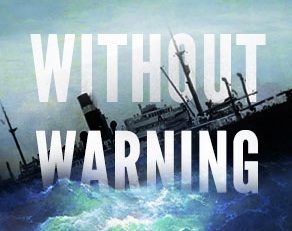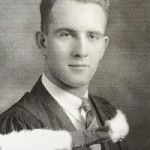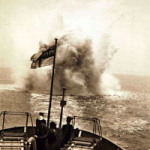When I began to consider finding a book agent to represent my forthcoming book, Without Warning, I needed to determine the genre for my book, which tells the true story of the Athenia, a British passenger ship torpedoed by a German U-boat on the first day of World War 2 in 1939.
One possible genre for the book is “narrative nonfiction.” It’s a popular format for book-length journalism and recent history, and includes titles like Truman Capote’s In Cold Blood, The Immortal Life of Henrietta Lacks by Rebecca Skloot and Unbroken by Laura Hillenbrand. Narrative nonfiction tells a factual story with a beginning, middle and end, written in a literary style that includes a narrative arc, characterizations, scenes and dialogue.
The information in these books is as accurate and verifiable, but the language and narrative techniques provide readers with a more literary experience and presumably a greater emotional connection with the book’s content.
The other possible genre for my book is “historical fiction,” which is a novel set in a particular historical time, usually with fictional characters as the drivers of the plot. Margaret Mitchell’s Gone With the Wind and Ken Follett’s Pillars of the Earth are just two of the many examples of this genre. While the characters and plot come from the author’s imagination, he or she cannot change historic events or the general social conditions that existed at that time. The genre requires careful research to accurately portray the period of history in which the book is set, as any reader of Louis L’Amour’s western novels can attest.
The fact that all of the principal characters in Without Warning are real people, who experienced the real events of the torpedoing and rescue operations described in the book, first led me to believe I had written a narrative nonfiction book. I interviewed survivors of the torpedoing and several descendants of the featured characters. I poured over documents in libraries and archives on both sides of the Atlantic and read the personal writings of many of the people involved. I consulted books and contemporary newspaper accounts to capture the sense of time and place of late summer, 1939, in Great Britain, and of conditions on the passenger ship and the U-boat.
All of this research was intended to portray the book’s characters as accurately as possible. But to bring them to life, so that readers might identify more strongly with them and the desperate challenges they faced, I needed to do more. I gave them personalities, emotions and thoughts, and did the same for the people with whom they interacted. I invented scenes and dialogue that not only revealed their personalities, but also offered insights into popular opinions of the time. Such inventions are not typical of the narrative non-fiction genre, which requires a journalistic fidelity to the facts, even including the words spoken in conversation.
How should I market Without Warning? Is it narrative nonfiction because the characters are real people whose actions and thoughts, in many cases, come from their own writing? Or is it historical fiction because I’ve invented scenes and dialogue for my characters that might have taken place, but can never be verified? What do you think?





Last night I read a 2012 Smithsonian article about Titanic, and found your answer. Regarding Walter Lord’s book: “The resulting book, A Night to Remember, is a masterpiece of restraint and concision, a work of narrative nonfiction that captures the full drama of the sinking.” He interviewed more than 60 survivors. You’re on a parallel with him.
Tom
Judy and I feel that you could probably make a case for either genre for your new book Without Warning. Maybe there’s a more descriptive genre of nonfiction with artistic license. Or creative nonfiction. In any event we are both looking forward to reading your new book.
Mike Cole